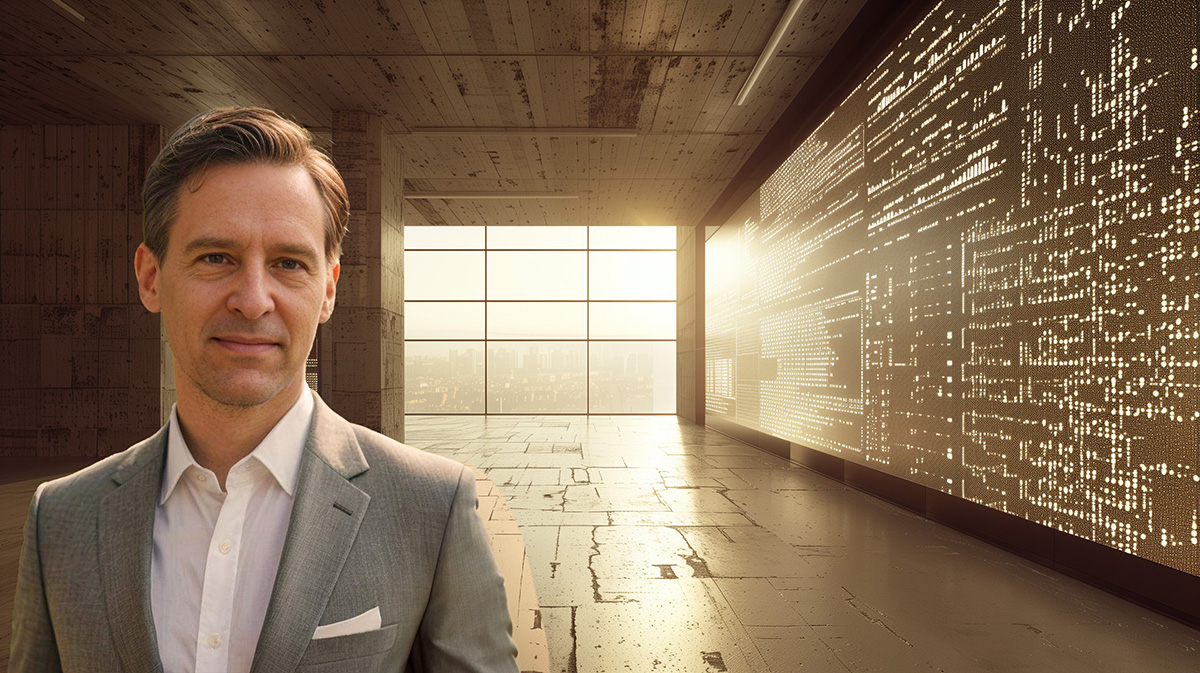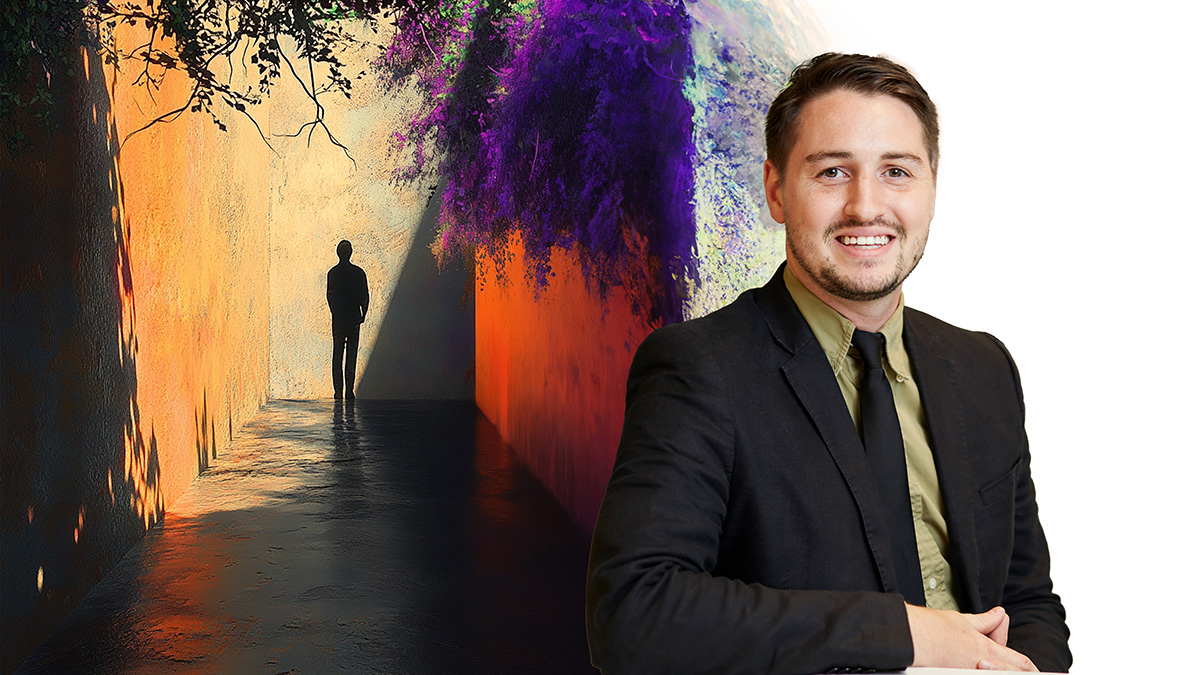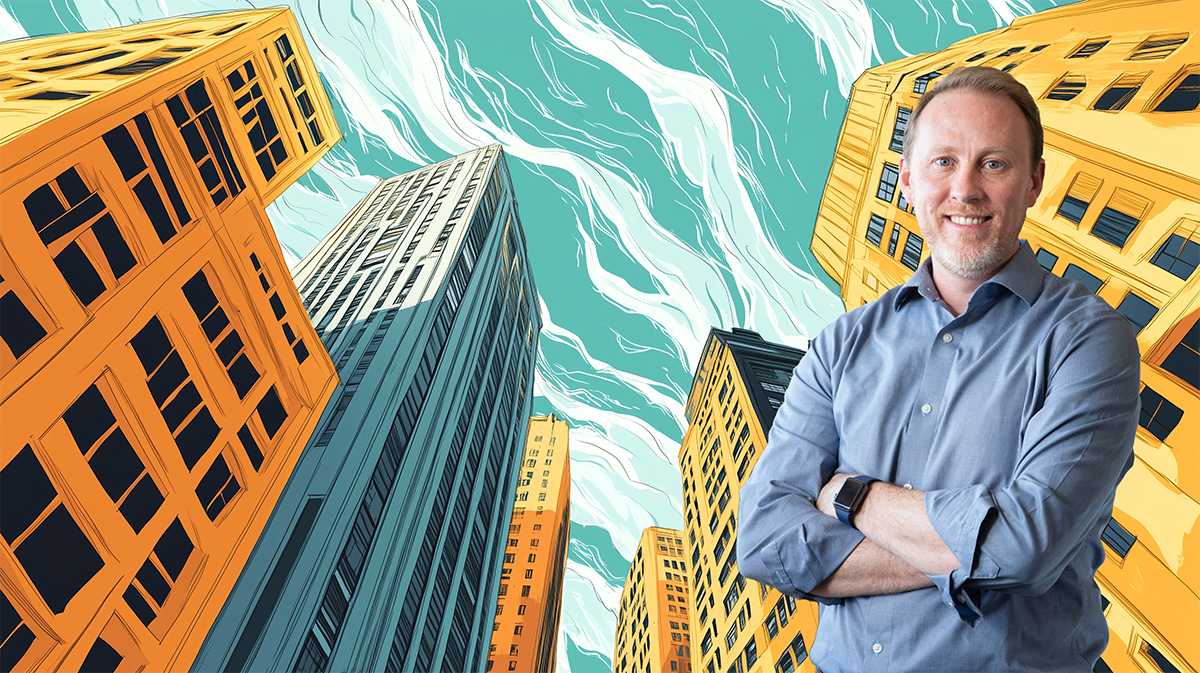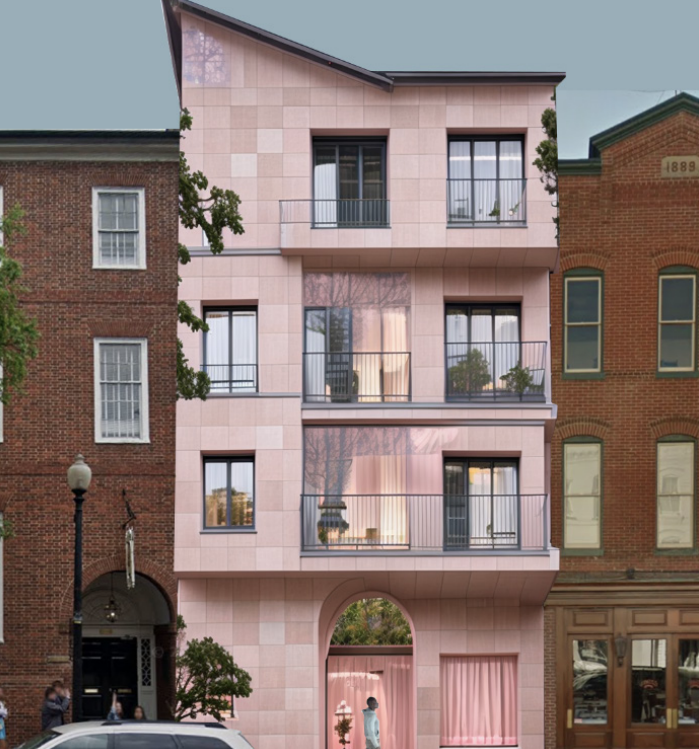The story originally appeared in Inhabit Magazine.
The following images in this story were generated using Midjourney by MAPP designer Jelena Djakovic, using keywords pulled from each of the interviews.
Hundreds of hands and years of planning are behind the architectural marvels that make up our city skylines. But, as artificial intelligence (AI) permeates the design world, those numbers may shrink. With the rapid advancement of large language models and generative AI, designers can quickly analyze reams of data and conceive astonishing renderings from just a handful of written prompts in seconds. It could be a boon for architects, offloading some of the more tedious tasks with a handful of keystrokes and allowing them to visualize different ideas faster and more efficiently.
But, as the technology grows, so does some trepidation among the design community of what AI’s impact will be on the future of the profession.
“[I’m] optimistically terrified,” said Ayers Saint Gross Design Technologist Mike Talbott ‘03, M.Arch ‘07. “I think the big question is, how far is it going to go into the creative realm and how far do we think it's going to be transformational in how we design buildings?”
According to a survey conducted by industry-leading architectural software company Chaos Enscape, around 46% of respondents reported using AI tools for their projects, and an additional 24% plan on using them in the future.
Will AI bring creativity or chaos to the design world? We asked Talbott and four other UMD alums currently exploring its capabilities in architecture on first impressions (ranging from rosy to skepticism), putting the tech to work in practice and the possibilities for the future.
Jordan Goldstein (‘94)
Co-CEO of Gensler

Recently named the sixth most innovative company in the world by FastCompany, it’s not a surprise that Gensler is diving into AI. But, its capabilities—and what it’s poised to do in the future for architects—go beyond throwing some words into a program to generate an image, says co-CEO Jordan Goldstein: It’s the ultimate collaboration tool for pushing innovation and speed. Design teams can often generate hundreds of images with an AI assist in the time it would take to create a handful conventionally, allowing them to hone the best concepts for further refinement. Beyond the concept stage, AI can help create more sustainable fabrication by predicting building performance or analyzing the lifecycle of materials.
But, it's the “add-on” pieces of collateral, such as “user experience” renderings generated in seconds by AI software, that Goldstein says brings their concepts to life by simulating what it feels like to inhabit the project. As part of a recent master plan project, the team generated evocative images of walking between buildings or seeing the site from the window of an airplane. Learning about the potential of the technology after 30 years in the field, said Goldstein, is like “an old dog learning new tricks.”
“I'm not only charged by it, but I feel like it's also an obligation to lean in, learn and experiment with it so that we can really make sure that our design work, our creative process, our innovation and our impact are at their utmost capability,” Goldstein said.
Mark Burlinson (M.Arch ‘93)
Principal, Interface Multimedia

The same year "Terminator 2" was released in theaters, Mark Burlinson and his future business partner Jeff Pulford M.Arch ‘92 were setting up the Architecture Program’s first computers just outside the Great Space. Mainstream AI software was decades away (despite the tech-powered assassins on screen), but Burlinson and Pulford knew the future was here: if they could just get the faculty on board.
“None of the professors wanted us to use the computers,” Burlinson said. “They thought it was folly.”
Thirty years later, Burlinson and Pulford are still using technology—including AI—as the co-founders of creative marketing studio Interface Multimedia to produce architectural visualization and marketing for their clients, who include developers, interior designers and architects.
Burlinson said the company is still learning and “scratching the surface,” using AI to assist with tasks such as code reviews, programming, writing and research.
They recently used the software Midjourney and OpenAI to help inform a brand guide for a sustainability design firm. The software significantly reduced their research time and provided a litany of information on sustainable building practices, said Burlinson, which the team filtered and distilled for the client.
“In the past, it would be something that would take my staff weeks to complete,” Burlinson said. “Now, we can do that research in a matter of hours.”
Austin Raimond (‘14, M.Arch ‘16)
Senior Associate, Perkins Eastman

Perkins Eastman Senior Associate Austin Raimond compares the exploration of AI to Hans Christian Andersen’s 1847 short story, “The Shadow.”
In the story, a man confined to his apartment uses his shadow as a “surrogate” to see the outside world he is longing to explore. The story takes a drastic, dystopian turn when the shadow replaces the man and achieves an identity for itself and lives a fully realized, fulfilled life. One could extrapolate a trade-off between what we choose to externalize versus take part in first-hand, says Raimond.
Raimond sees AI’s potential as a “surrogate” tool to explore the edges of creativity and offer different design perspectives—while still giving autonomy to the human at the keyboard. He recently has been working with software like Stable Diffusion and Midjourney to investigate and “stress test” what they can achieve for iterative design tasks.
Perkins Eastman, he says, is in the early stages of experimenting with what AI can do; still, clients on tight deadlines have asked if the firm could use the technology to accelerate the ideation process. While he is excited about the efficiencies it brings, he doesn’t see AI as a one-stop solution
for designing.
“I would be very concerned with any design process that was relying on pushing a single button, generating a couple images and declaring that the design,” he said. “I see generative design more as an emergent tool for informing a series of design avenues and explorations that are going to feed into how we're solving the larger problem.”
Coren Sharples (‘87)
Founding Principal, SHoP Architects

Coren Sharples has always considered her architectural firm a trailblazer of technology and innovation “in the service of great design”–and now, she’s looking to AI to enhance this effort.
As a founding principal of SHoP Architects, Sharples and her team are exploring ways to use AI to help the company build models with the "SHoP DNA”: training AI tools with data from their own projects to help generate models. AI could create and test multifamily residential unit mixes for floor plans using SHoP's guidelines. It can evaluate what to add or do in the development stages. Then, different outputs could be incorporated into the model.
This approach, says Sharples, is both efficient and effective from a business standpoint and ensures the knowledge doesn't get lost. She calls it a "digital twin."
”I’ve been really excited about how we can use technology to do the dumb stuff,” she said. “It frees designers’ time up to focus on more creative visioning and problem solving–the things that really matter.”
Michael Talbott (‘03, M.Arch ‘07)
Design Technologist, Ayers Saint Gross

Ayers Saint Gross’ Mike Talbott has used AI programs like Autodesk’s Forma to quickly assess the impact of wind conditions on high rise projects and other analyses typically farmed out to consultants. But, on days when his creative tank is running on empty, he occasionally turns to AI for fuel.
“I love using it as this ideation tool where it just spits out a bunch of crazy results,” he said. “I take them all with a grain of salt, but maybe one of them kind of sparks something in me that then I want to explore further. So, I learn from it and then build upon it.”
Ideas generated by AI are built off massive amounts of information found online—from drawings and photographs to text and video. It is creative, says Talbott, because it riffs on human creativity. But, he’s worried that AI could someday move from assistant to creative director as it continues to learn.
“One caveat is if it surpasses that barrier,” he said.
Machine Learning
How Will AI Impact Architecture Curriculum? Faculty Test-Drive the Tech in Studio Pilot.

Any architecture alum who’s lamented the lighting in the Great Space might get a certain satisfaction seeing what Associate Clinical Professor Hooman Koliji’s students cooked up with AI: inverted skylight “pyramids” that funnel light into the studio, and other sustainable design elements that breathe new life into the 52-year-old building. The concepts, aided by software like Autodesk and Midjourney, were part of an early AI elective taught by Koliji in the fall of 2023, with students transforming hand-drawn sketches into full renderings.
If Koliji’s elective challenged students to reconsider the school’s roof, the expansive curriculum created this fall by architecture faculty blew it clean off. Two Teaching & Learning Transformation Center AI-focused grants from the University of Maryland funded new AI workshops for undergraduate and graduate studios, an in-depth report on the state of AI in the profession and academy, and a symposium.
Associate Clinical Professors Brittany Williams '05, M.Arch '07, Michael Ezban and Lindsey May designed and piloted week-long AI workshops that engaged over 150 students with text-to-image-based tools to explore building aesthetics, landscape design and analysis, and facade design.
These tools and workflows helped students rapidly iterate a range of ideas that furthered their studio projects.
Williams, Ezban and May’s research into AI, which was aided by three graduate students over the summer, culminated in “The AI Report,” a 50-page booklet that offers a perspective on the state of AI in the profession and the academy, and served as a useful primer for UMD students engaging with AI for the first time. They also organized the AI + Design Thinking Symposium, held in mid-November, which brought together international professionals, alumni and researchers to share their experiences with AI and observe the work happening in the Architecture Program’s studios.
Intelligently Predicting Housing Instability
Imagine predicting which apartment buildings on a neighborhood block were most at-risk for turning their vulnerable residents out on the street. It’s a dream for city and county governments grappling with shrinking affordable housing stock and upticks in homelessness—but could soon be a reality.
UMD’s National Center for Smart Growth researchers Kathryn Howell, Chester Harvey and Nick Finio M.C.P. '15, Ph.D. '22 are in the early stages of creating an innovative system to help forecast housing instability and preserve housing affordability, with a pilot currently underway for the Purple Line Corridor’s Preservation Network in partnership with Enterprise Community Partners.
The project uses AI to sort, integrate and merge county and state level data about properties, such as housing evictions, court filings and building conditions, to store information and analyze at-risk buildings.
According to Harvey, the system will be used as an initial screening tool for identifying buildings that have the potential to be unstable along the Purple Line corridor.
“It's really difficult for folks in assistance agencies or nonprofits that are trying to help maintain affordable or stable housing to know where to look,” Harvey said. “What this is designed to do is be an early warning system for saying, ‘Oh this building looks like it has some factors that could make it unstable. Let's see what we can do to improve the stability going forward.’” //

